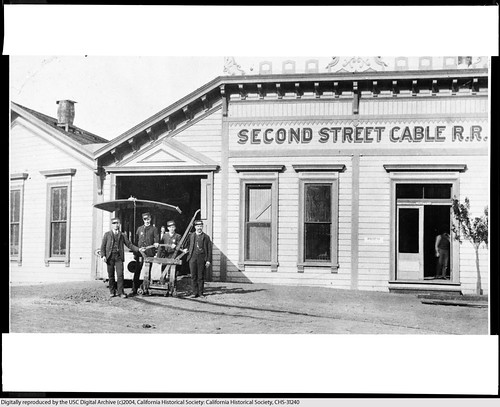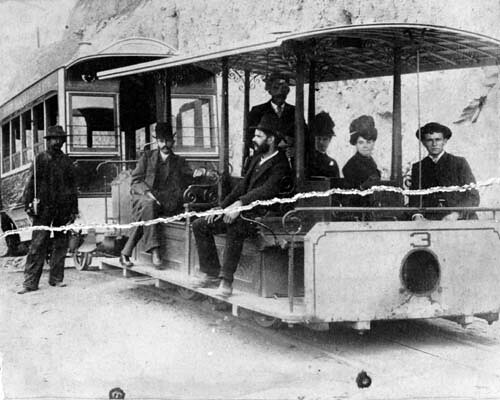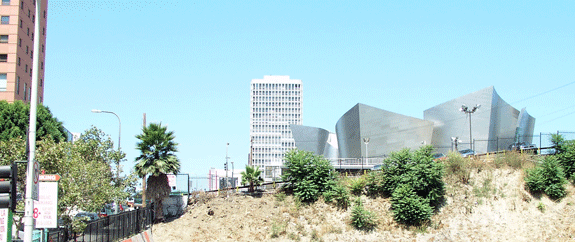
Folk will on occasion ask me what, if anything, is left of Bunker Hill. Glad you asked, I‘ll reply, answer being, nothing really, but I am awfully fond of this particular dirt contour. If they don‘t politely turn away, I‘ll commence upon a detailed discourse on said excrement-laden dirt contour in question, and then they‘ll politely turn away.
Strange as it sounds, I love this dirt. I have since I was one day idling in my auto adjacent this, the northwest corner of Second and Hill, when I saw this form and it recalled an image lodged in some dim grotto of my brain:
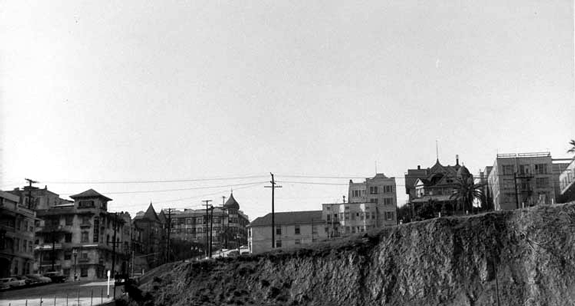
And I thought, I know that form. That contour. Like a beautiful woman in repose. Debased somehow, but still noble. Ingres‘ Odalisque has become Manet‘s Olympia.
So here I am in pith helmet and plus-fours, poking around the strangely stained abandoned sweatpants and taking in the stench of urine steaming away on a hot summer‘s day. My own Persepolis, only with more recent death and egesta. A remaining honest remnant of Bunker Hill, carved in dirt. There‘s an old Yiddish proverb–Gold‘s father is dirt, yet it regards itself as noble.
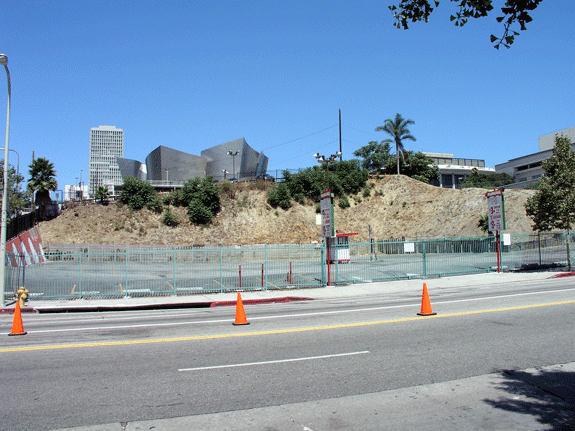
Let‘s take a detailed look at the block our patch of dirt calls home.
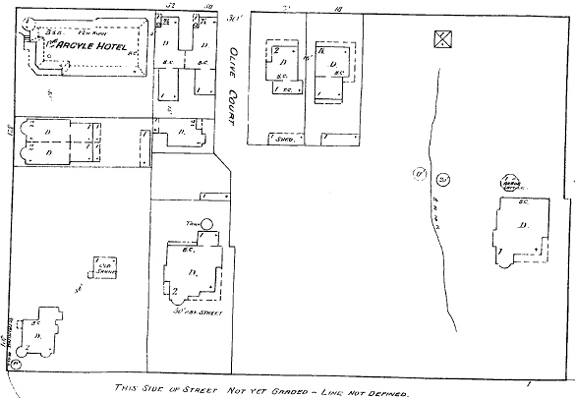
In 1888, on the 30-40′ bluff overlooking Hill there’s a large house, center, and another (with a “old shanty”, it is noted) at the corner of Second and Hill. The round structure above the house on the right reads “arbor lattice.” Note the porches on the Argyle.
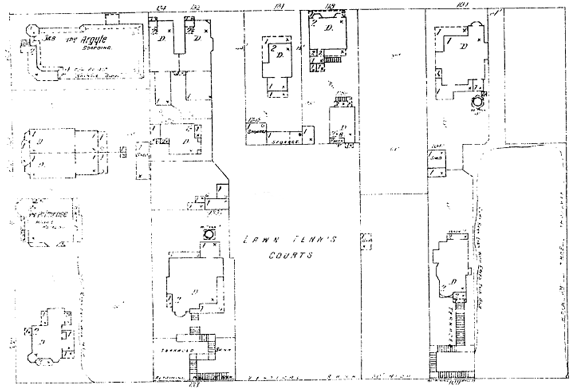
1894, and 133 Hill has built terraced steps up to its manse. Our house in the corner has sadly lost its shanty. Notice the addition of the Primrose hotel at 421/419 West 2nd. At the bottom it reads “Vertical bank 30‘ high.” The house near 1st has been razed but 109 Hill has been added. 104 Olive has shown up, top right. And yes, that says “Lawn Tennis Courts.”
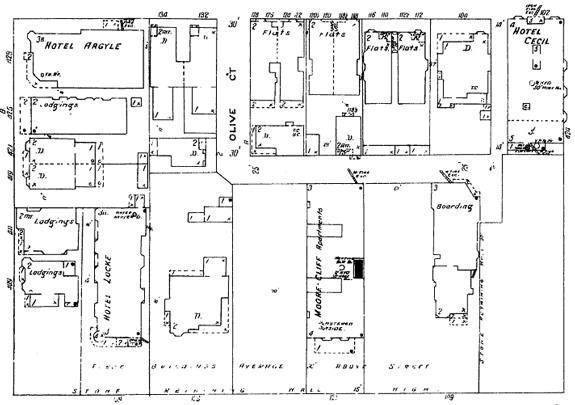
It‘s 1906, and much has changed: our little friend in the corner has disappeared. In its place, just to the north, two lodging houses at 411 and 409. To the west, Hotel Locke. (Hotel Locke shows up in the Times in 1897 and disappears in 1912.) Olive Court has wrapped around and filled in, and the tennis lawn has given way to our old friend the Moore Cliff. The former single family dwelling at 109 has been enlarged to become the El Moro Hotel. Note the Hotel Cecil in the upper right. Hill now has a 15‘ retaining wall; the houses average 30‘ above grade.
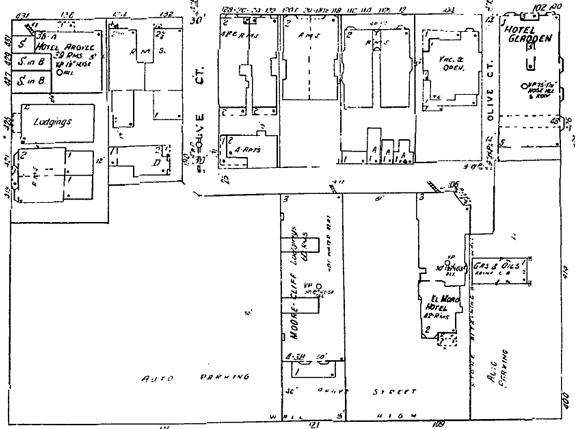
But now it‘s 1950 and the drastic has occured. Where once Second Street was sixty feet across, it is now 100, due to the construction of the Second Street tunnel, which opened in July of 1924. (As Mary mentioned in her post, the Argyle lost its porches.) Also lost were the two structures below the Primrose at 411 and 409, not to mention the Hotel Locke. These were even gone before the great excavation. The Hotel Cecil has, as you might imagine, been renamed, so as not to be confused with the Hotel Cecil. We even have a little gas station.
In a nutshell, ca. 1952: the Moore Cliff front and center, the bipartite El Moro, and the Hotel Gladden up the block in the corner. And there‘s the Texaco station that popped up. (Faithful Bunker Hillers will recognize the looming backside of the Melrose Annex and the Dome up top.)
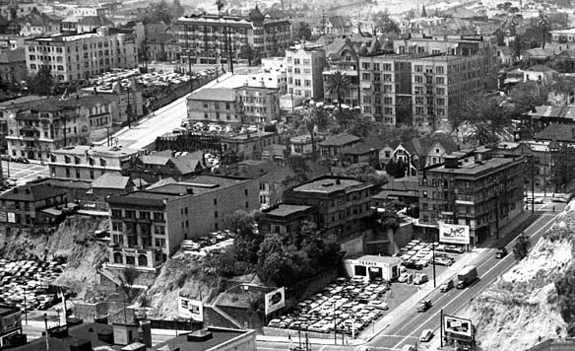
But back to the “great excavation.” Remember, once Hill had, well, a great hill looming o‘er. It was true here, at our corner in question:

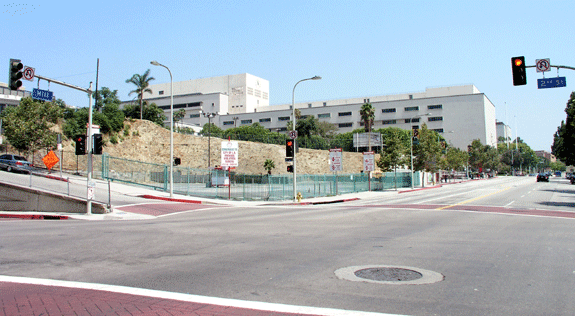
What happened to the giant pile of dirt (upon which 411 and 409, and the Hotel Locke once
sat) as seen in the 1932 photograph?

As can be barely viewed just below the Moore Cliff in the ‘32 shot, a lot fronting Hill has already been excavated for auto parking, and in May of 1935 the two adjacent lots at the corner were leveled by Los Angeles Rock and Gravel, removing 40,000 cubic yards of earth adjoining the tunnel ramp, measuring some 45hx82wx157d’. One lot owner, C. J. Heyler, rented the space to P. F. Drino for automobile parking; Heyler stated that construction on the lot was planned. That, of course, never happened.
This, then, is how we ended up with Hill carvings that have remained unchanged for seventy-three years.

And still fulfilling the same purpose.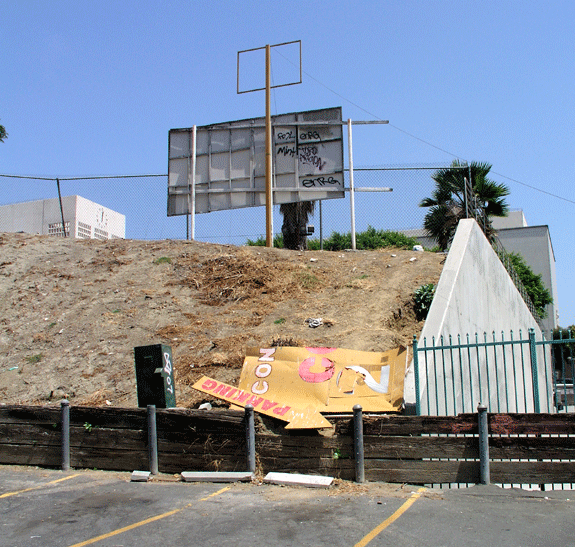
Looking southeast at our dirt, 1967, before her Hill Steet side had her top shaved off:
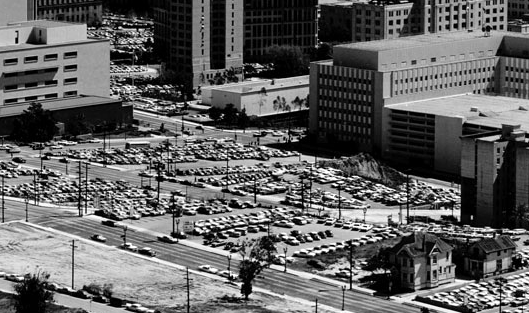
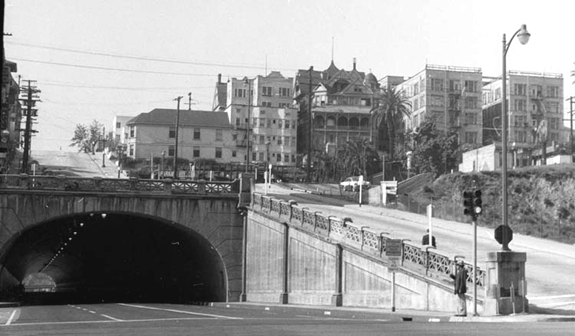
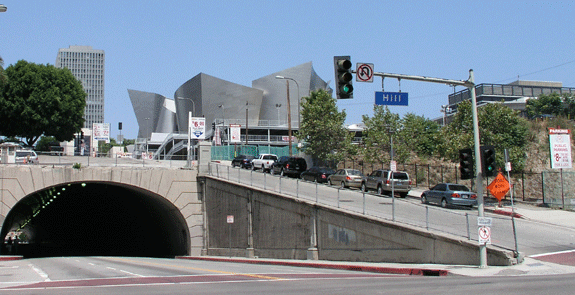
A quick word about the Second Street tunnel–with the millions the CRA is again pouring into Bunker Hill, do you think we could throw a few bucks toward a new railing? To refashion the original concrete couldn‘t run that much, and if not an aesthetic improvement, would be arguably safer than chain link. Right?
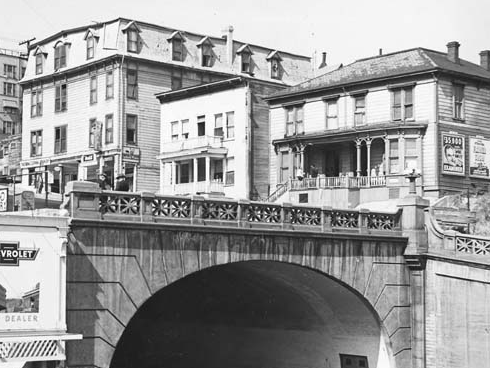
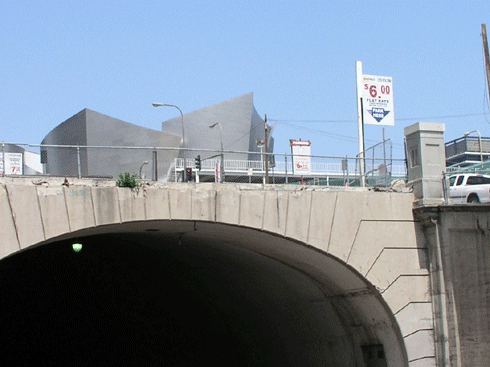
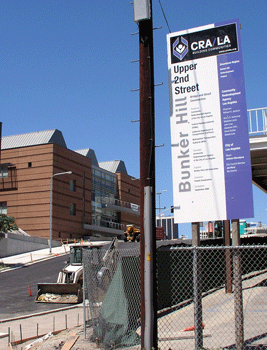
Thank you in advance for your attention to this matter.
In any event, such is the tale of some simple dirt on a single block. Tune in next week for tales of terror as they relate to this part of the world.
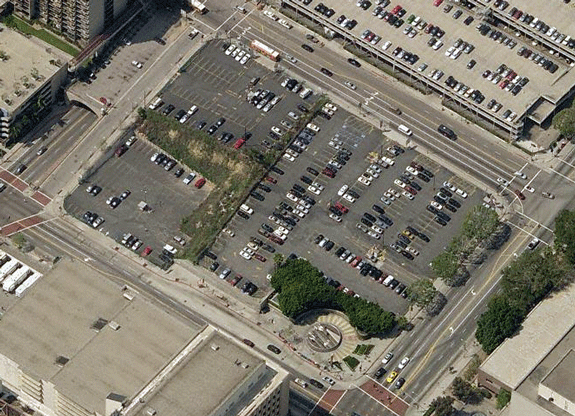
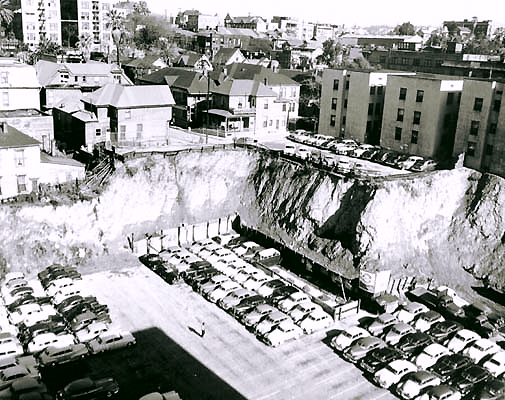
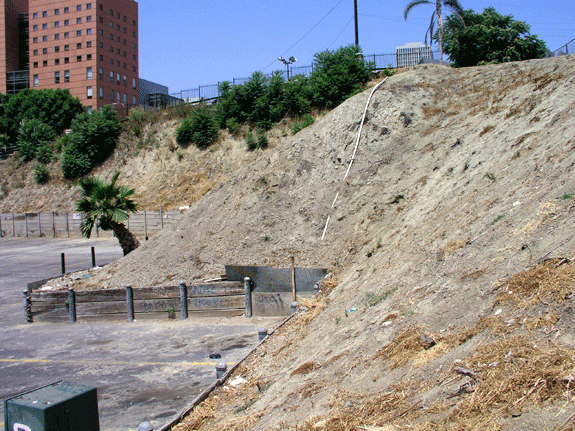
And now, you can launch into your own spiel about the dirt contours of Hill Street. I suggest a visit and have a whiff for yourself of what once was Bunker Hill. Serves to add that dose of realism guaranteeing the polite turning-away of cocktail party folk.
Images courtesy Arnold Hylen Collection, California History Section, California State Library and USC Digital Archives; special thanks of course to D. A. Sanborn, his map company, and the anonymous field men who toiled on the fire insurance maps Sanborn Co. produced.




